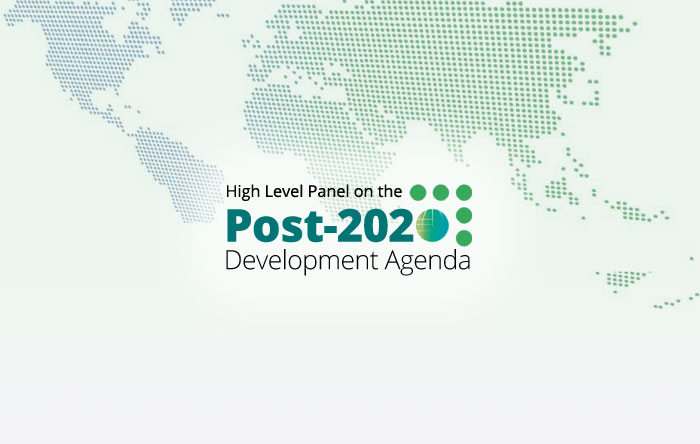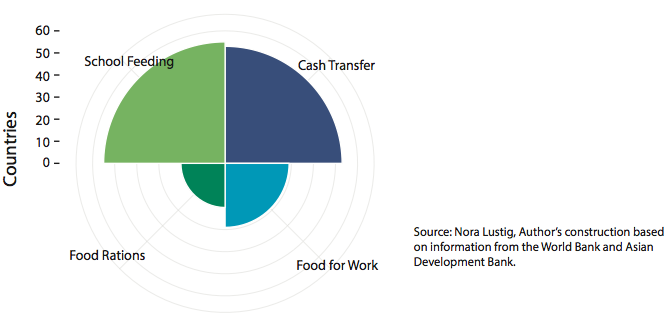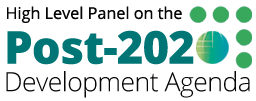1. End Poverty

a) Bring the number of people living on less than $1.25 a day to zero and reduce by x% the share of people living below their country’s 2015 national poverty line
b) Increase by x% the share of women and men, communities and businesses with secure rights to land, property, and other assets
c) Cover x% of people who are poor and vulnerable with social protection systems
d) Build resilience and reduce deaths from natural disasters by x%
Every day, poverty condemns 1 out of 7 people on the planet to a struggle to survive. Many of those living in extreme poverty are ignored, excluded from opportunities, sometimes for generations. Today, 1.2 billion people suffer under the hardship of living on less than the equivalent of $1.25 per person per day. This means that they can only buy the same amount of goods and services as $1.25 would buy in the United States. For more than a billion people, $1.25 a day is all there is to feed and clothe, to heal and educate, to build a future. We can be the first generation to eradicate this extreme poverty. This is a global minimum standard and must apply to everyone, regardless of gender, location, disability or social group.
Continuing on current growth trends, about 5% of people will be in extreme poverty by 2030, compared with 43.1% in 1990 and a forecast 16.1% in 2015. With slightly faster growth and attention to ensuring that no one is left behind we can eradicate extreme poverty altogether.
Poverty is not, of course, just about income. People who live in poverty in whatever country are always on the edge, chronically vulnerable to falling sick, losing a job, forced eviction, climate change or natural disaster. Their earnings vary by day, by season and by year. When shocks hit, it is catastrophic. Since 2000, deaths related to natural hazards have exceeded 1.1 million and over 2.7 billion people have been affected. Poor people often lack the resources or support to recover.
Global leaders have agreed that “poverty has various manifestations, including lack of income and productive resources sufficient to ensure sustainable livelihoods, hunger and malnutrition, ill-health, limited or lack of access to education and other basic services, increased morbidity and mortality from illness, homelessness and inadequate housing, unsafe environments, and social discrimination and exclusion. It is also characterised by a lack of participation in decision-making and in civil, social, and cultural life.”
The post-2015 agenda should tackle all of these aspects of poverty and confront inequality to make sure no one is left behind. People want the chance to lift themselves out of poverty and they aspire for prosperity. We considered suggesting a higher target – perhaps $2 a day – to reflect that escaping extreme poverty is only a start. However, we noted that each country, and places within countries, often have their own threshold for what constitutes poverty. Many such poverty lines are well above $1.25 or $2 a day. It is our hope and expectation that countries will continuously raise the bar on the living standards they deem minimally acceptable for their citizens and adjust their poverty line upwards over time, and that the global poverty line will follow suit to at least $2 by 2030. That is why we have included a target for reducing the share of people below the national poverty line as well as for extreme poverty.
People in poverty need the tools to cope with adverse and potentially devastating shocks. They have a strong interest in good management of their environment because on average they get more than half their income from farming marginal lands, fishing coastal waters and scouring forests for wild foods, medicinal plants, fodder, building materials and fuel. No one is more vulnerable than people in poverty to desertification, deforestation and overfishing, or less able to cope with floods, storms, and droughts. Natural disasters can pull them into a cycle of debt and illness, to further degradation of the land, and a fall deeper into poverty.
To address these challenges, one target focuses on resilience. Resilience means individuals being ready to withstand, able to adapt–when it comes to health, economic or climatic shocks—and able to recover quickly. Resilience enables people to move from the fringes of survival to making long-term investments in their own future through education, better health, increased savings and protection for their most valuable physical assets such as home, property and means of livelihood. For society, the by-product is greater economic productivity.
People are more likely to make long-term investments when they feel secure on their property. Tenancy reform in West Bengal led to a 20% increase in rice productivity. Indigenous peoples and local communities often have traditional rights over land. But when people or communities lack legal property rights they face the risk that they will be forced to leave their land. Business will also invest less and be less able to contribute to the economy. We know property rights are important, but also realise the challenges of measurement. We urge further work on this issue.
Social assistance programmes are another potential game-changer that can directly improve equality. They have been extraordinarily successful in Mexico, Brazil and other countries. We can build on these successes and adopt them more widely. We can aim to improve the effectiveness of these programmes by ensuring greater coherence, reducing overheads and overall costs. And we can use modern technology and increasing evidence of what works to more precisely target specific needs. But social assistance programmes vary considerably in quality and perverse incentives can be created if the focus is just on access. We do not yet know how to measure all aspects of quality, but encourage experts to think about the proper standards.
Targets found under other goals address non-income dimensions of poverty: basic needs like health, education, water, sanitation, electricity and other infrastructure; basic freedoms like legal registration, freedom from fear and violence, peace, freedom to access information and participate in civic life.
Number of Developing Countries with Social Protection Coverage

